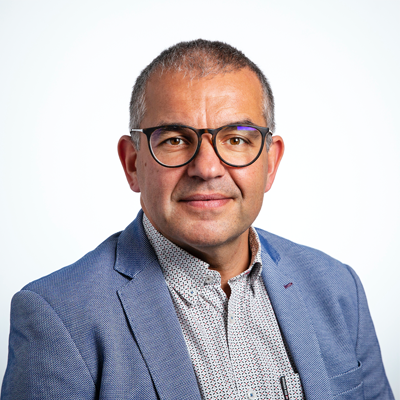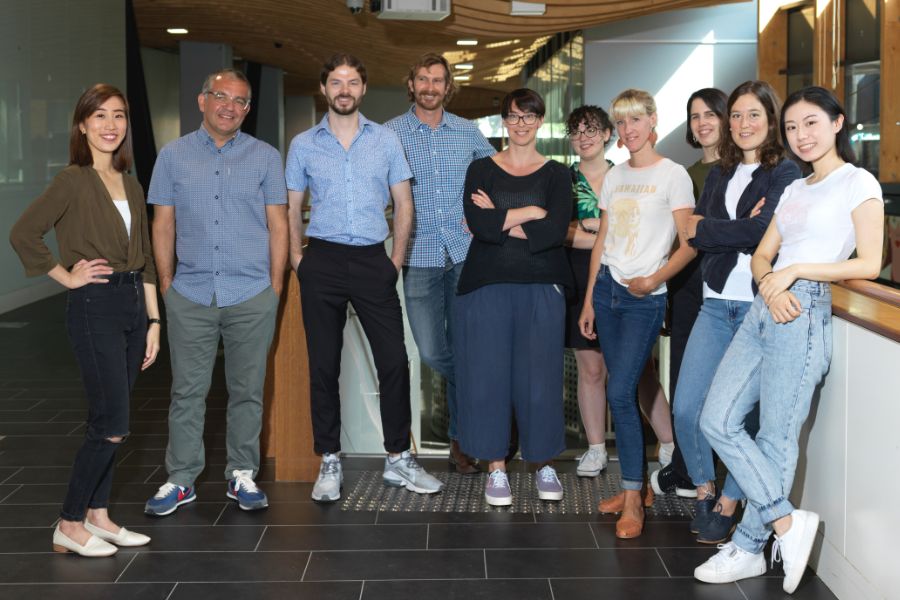-
Role of innate signals in inducing protective T cell immunity
Although it is clear that the innate and the adaptive immune system are inextricably linked, precisely how these two arms of the immune system interact still remains unclear. This project examines how specific pathogen sensing pathways contribute to effective killer T cell responses. Sammy’s group is specifically interested in type I interferons and how these are induced and regulated in dendritic cells through molecules or molecule complexes such as toll-like receptors, STING and inflammasomes.
-
Delineating how CD4 T cells ‘help’ establishing effective killer T cell responses
Resolution of virus infections relies on the orchestrated activation of dendritic cells (DC), CD4 T cells and killer T cells. We have known for some time that CD4 T cells contribute to killer T cell immunity, but how CD4 T cells, DC and killers interact in vivo is still unclear. Using a model of peripheral virus infection, Sammy’s group found that CD4 T cells contributed to CTL immunity by amplifying the IFN-α/β-induced provision of IL-15 by DC to CTL. Building upon these novel findings, they are currently dissecting the molecular mechanisms.
-
Understanding the interaction between microbiota and T cell immunity
Development of autoimmune diseases has been linked to disturbances in the microbes that normally colonise our body surfaces. However, precisely how these microorganisms and the resulting stimulation of the immune system impact on T cells still remains elusive. Building on extensive preliminary data available in the lab, this project investigates how the microbiota influences particular cytokine responses that are highly relevant to our understanding of T cell-mediated autoimmune disease, such as type I diabetes.
-
Deciphering the relative contributions of different Dendritic cells to killer T cell responses
Continuing our endeavor to resolve the role of dendritic cells (DC) in virus infections, this project investigates the relative contributions of different DC subtypes to killer T cell priming and examines the molecular pathways involved (direct versus cross-presentation). Utilising in vivo models that remove the capacity of cells to directly present viral antigen, Sammy’s group found that robust virus-specific killer T cell responses depend on cross-presentation. They are currently delineating the underlying mechanisms.
-
Understanding and exploiting programmed cell death pathways during intracellular infections
Infections with intracellular pathogens remain a major human health burden. Although programmed host cell death is thought to play an important role in controlling these pathogens, defects in individual pathways of programmed cell death (i.e. pyroptosis, necroptosis, apoptosis) often only cause minor defects in the control of such infections. This is likely related to redundancy that evolved in response to pathogen evasion strategies, which allows the host to compensate for evasion of one pathway through the activation of another. Sammy's group is currently investigating the organisation, regulation and utilization of this system of redundancy in cell death pathways.

Professor Sammy Bedoui
(03) 8344 9911 | sbedoui@unimelb.edu.au
- Position:
- Lab head
- Theme(s):
- Immunology
- Discipline(s):
- Discovery Research
- Unit(s):
- Department of Microbiology and Immunology (DMI)
- Lab Group(s):
- Bedoui Group
Professor Sammy Bedoui heads a laboratory in the Department of Microbiology and Immunology and is a lead for the Discovery Science Cross-Cutting Discipline at the Doherty Institute. Sammy has a medical degree from the Hannover Medical School in Germany. His research examines how dendritic cells and T cells interact during infections, with a particular interest in deciphering how specific innate signals shape these interactions. Sammy teaches Immunology to undergraduate students and leads an international PhD student exchange program with the University of Bonn in Germany. Sammy has previously held positions at the Walter and Eliza Hall Institute in Melbourne, the National Institute of Neuroscience in Tokyo and the Hannover Medical School.



